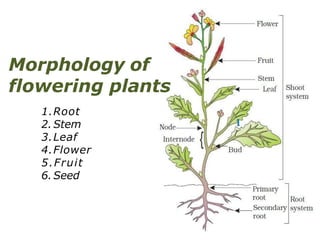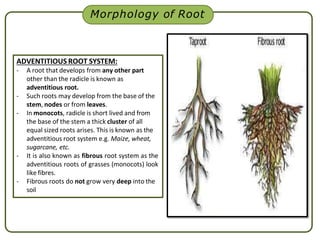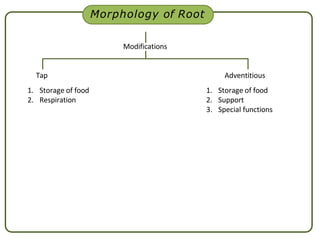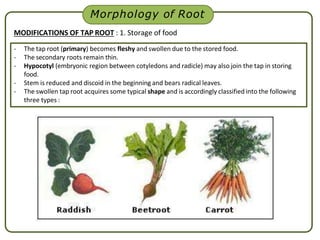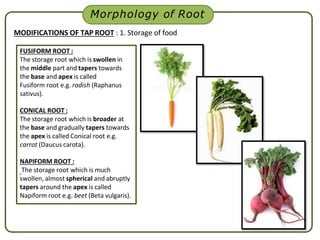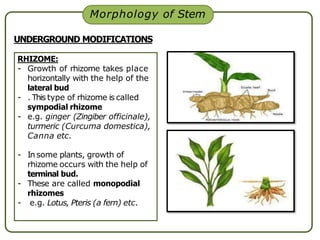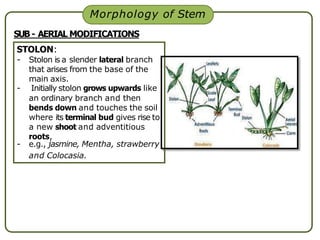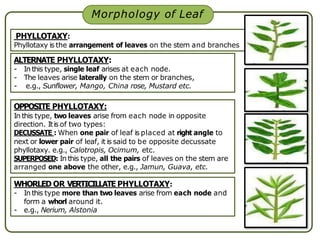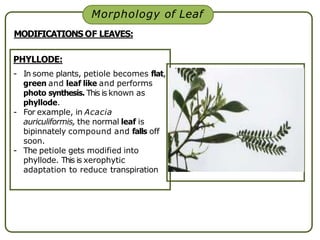The document discusses the morphology and modifications of roots in plants. It describes the main regions and functions of typical roots, including the root cap, meristematic region, region of elongation, region of root hairs, and region of maturation. It also discusses two main root systems - tap roots and adventitious roots. Tap roots develop from the radicle and form a main tap root with branches. Adventitious roots develop from other parts like stems and leaves. Some roots are modified for specialized functions like storage, respiration, support, and parasitism.
